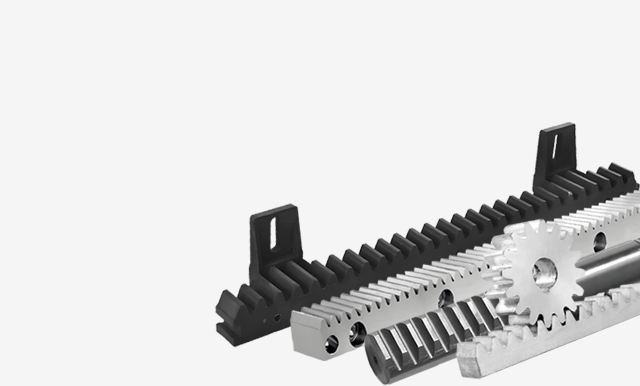No. 200 Gaoxin RD, Shanghua St, Lanxi, Zhejiang, P. R China
The CNC (Computer Numerical Control) machine tools are widely used in ...
See DetailsGear and gear rack systems are essential mechanical components widely used in industrial automation, machine tools, automotive systems, and various other sectors where precise motion transfer is necessary. While these systems are designed for durability, they are not immune to wear. Over time, various operational and environmental factors can affect the performance of gear and gear rack components. Understanding these causes is important for extending the service life of the system and maintaining consistent performance.
The common causes of wear in a gear and gear rack system is inadequate lubrication. Proper lubrication reduces friction between the gear teeth and the rack, allowing for smooth movement and reduced heat generation. Without sufficient lubrication or when using the wrong type of lubricant, metal-to-metal contact increases. This accelerates the degradation of both the gear and the gear rack, often resulting in scoring or pitting of the surfaces. Over time, this wear affects gear meshing accuracy and efficiency.
Misalignment is another frequent issue. If the gear and gear rack are not aligned correctly during installation or become misaligned during operation, the teeth may not engage evenly. This leads to uneven load distribution, causing some teeth to bear more force than others.

Excessive load or shock load is also a contributing factor. Every gear and gear rack system is designed to handle a specific range of loads. Operating under conditions where the applied load consistently exceeds design limits can put undue stress on the gear teeth. This can cause plastic deformation, surface fatigue, and even tooth breakage. In some applications, sudden impact or shock loads—such as those experienced in heavy machinery—can result in rapid deterioration of the system.
Another often-overlooked factor is contamination. When dust, metal shavings, or other particles enter the lubrication system or settle on the contact surfaces, they create an abrasive layer that accelerates wear. Contamination not only affects the surfaces of the gear and gear rack but can also compromise the effectiveness of lubricants.
Material quality and surface treatment also influence wear. Gear and gear rack systems manufactured from low-grade materials or lacking proper surface hardening may not withstand repeated stress and contact as well as components made from treated or higher-strength metals. Surface treatments such as carburizing or nitriding can significantly improve resistance to wear, but if not applied correctly, the benefits are reduced.
Improper maintenance schedules further contribute to wear. Regular inspections, cleaning, and re-lubrication can help identify early signs of wear and address minor issues before they escalate. When routine maintenance is neglected, small problems accumulate and cause more extensive damage over time.
Operating speed and temperature play a role. High-speed applications generate more heat and friction, which can accelerate wear if not properly managed. Similarly, operating the gear and gear rack in environments with high or fluctuating temperatures can affect lubrication consistency and material properties.
Gear and gear rack wear is influenced by a combination of mechanical, environmental, and operational factors. By addressing lubrication quality, ensuring correct alignment, controlling load conditions, preventing contamination, and adhering to maintenance schedules, it is possible to significantly reduce wear and improve the longevity of these components. Awareness of these common causes enables users to implement preventative measures that keep gear and gear rack systems running efficiently over time.